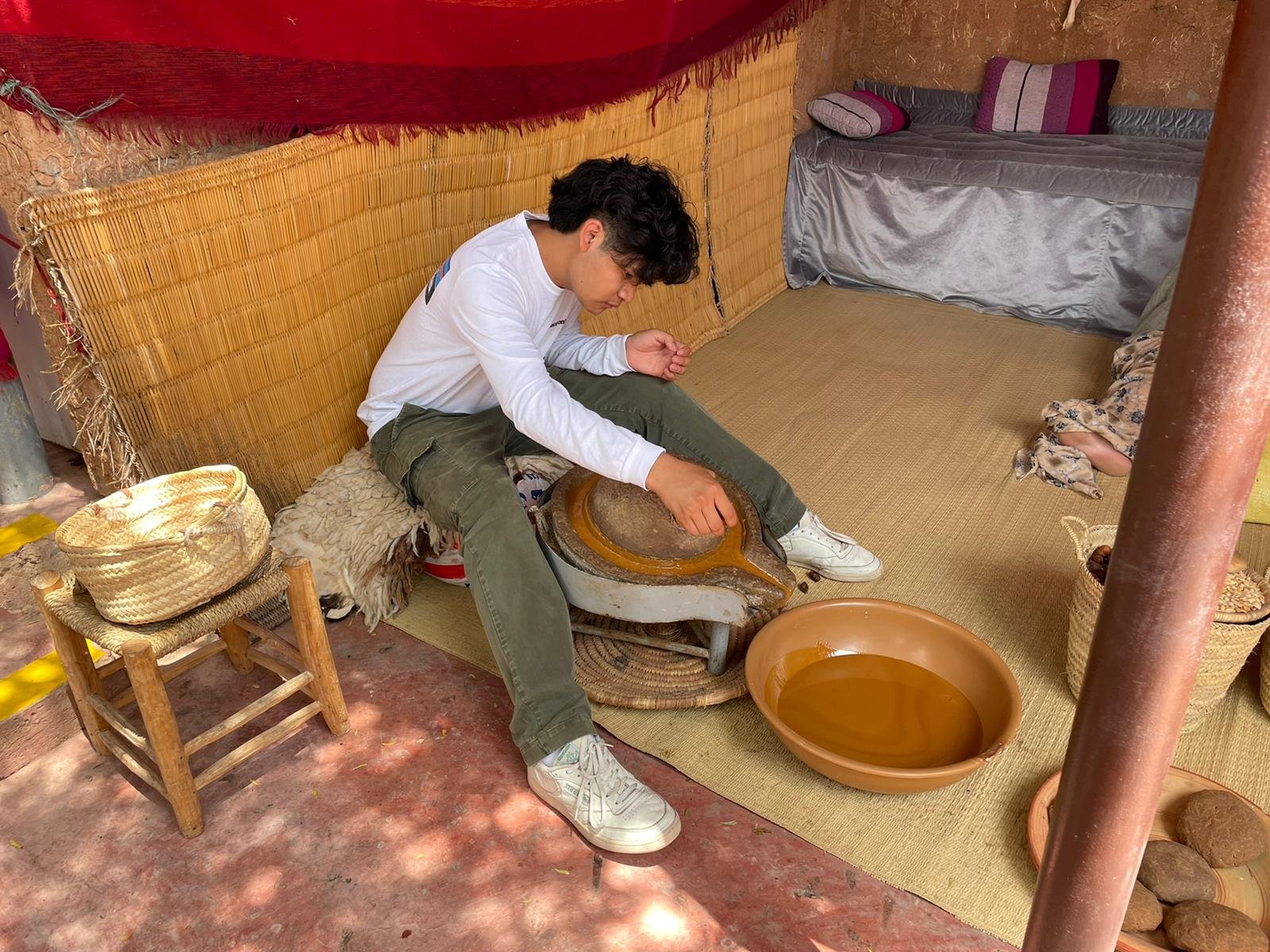Blog #13 Visiting Alma Cooperative
Andy learning how to grind argan nuts with a stone at the cooperative.
On June 11th, we went to visit our first argan cooperative called Alma. It is located near the towns of Taghazout and Aourir south of Agadir. We passed many argan trees on our way there. The terrain was mountainous and puts into perspective the physical demands of harvesting the argan fruit from trees in the mountains.
Mountainous terrain of the argan forest on the way to Alma Cooperative.
Upon entering the building, we walked into an area that was setup as a store. There was a cash register and some argan products for sale on display. Our interest was primarily on learning about the process of argan oil extraction, so we proceeded through another door that led us to an open courtyard area with a huge argan tree as its centerpiece.
The argan tree at the center of the cooperative courtyard.
A young woman began to tell us about the argan tree and how it is a symbol of resilience. She then transitioned to telling us about how argan fruit is collected from the ground and dried before its outer fruit is removed. Once the outer fruit is removed, an inner shell is cracked and the argan nut is then removed.
The outer fruit is commonly used as animal feed while its inner shell is used along with firewood to fuel an oven that is used to roast argan nuts that will be processed to produce edible oil. Argan oil used for cosmetics needs to be cold pressed, and requires more nuts to produce an equivalent amount of oil than roasted nuts. Argan nuts are not homogenous, they vary in quality, size and shape. After argan nuts have been grinded, the residual paste is then kneaded by hand to separate the oil from the seed cake, and byproducts in the shape of big cookies are formed. These cookies can then be used in animal feeds, facial creams, soaps, or additional cosmetic uses.
Collected argan fruits (called affyache in Tashelhit language) that will be dried before they are dehusked are shown on the left. The picture on the right shows the variation in argan nut (tiznine) size and quality.
On the left is an oven that is fueled by firewood and argan shells for roasting the nuts that are ground to make edible argan oil.
After the end of the presenter’s talk, we were given the opportunity to participate in the argan oil extraction process. It was an offer we could not resist. Each one of us took turns participating in the steps ranging from cracking the argan fruit/shell to grinding the nuts.
On the left, a traditional grinding stone used to process the roasted nuts to make edible oil. On the right, Jess, Andy, Noura, and I participated in various steps involved in the oil extraction.
Many hours of physically demanding labor go behind each liter of argan oil produced and we learned that during this coop visit. We concluded our visit with tea, bread, and many dips prepared for us and shopping for argan and other products sold at Alma.
After the presentation, we were served Moroccan tea and bread with dips such as argan oil, honey, cactus honey, amelou (a mixture of ground almonds, honey and argan oil). Pictured on the right, Salah Eddine is browsing the products that were on display in the cooperative store.
-by Yoel Gebrai, Engineering PhD candidate at USF






